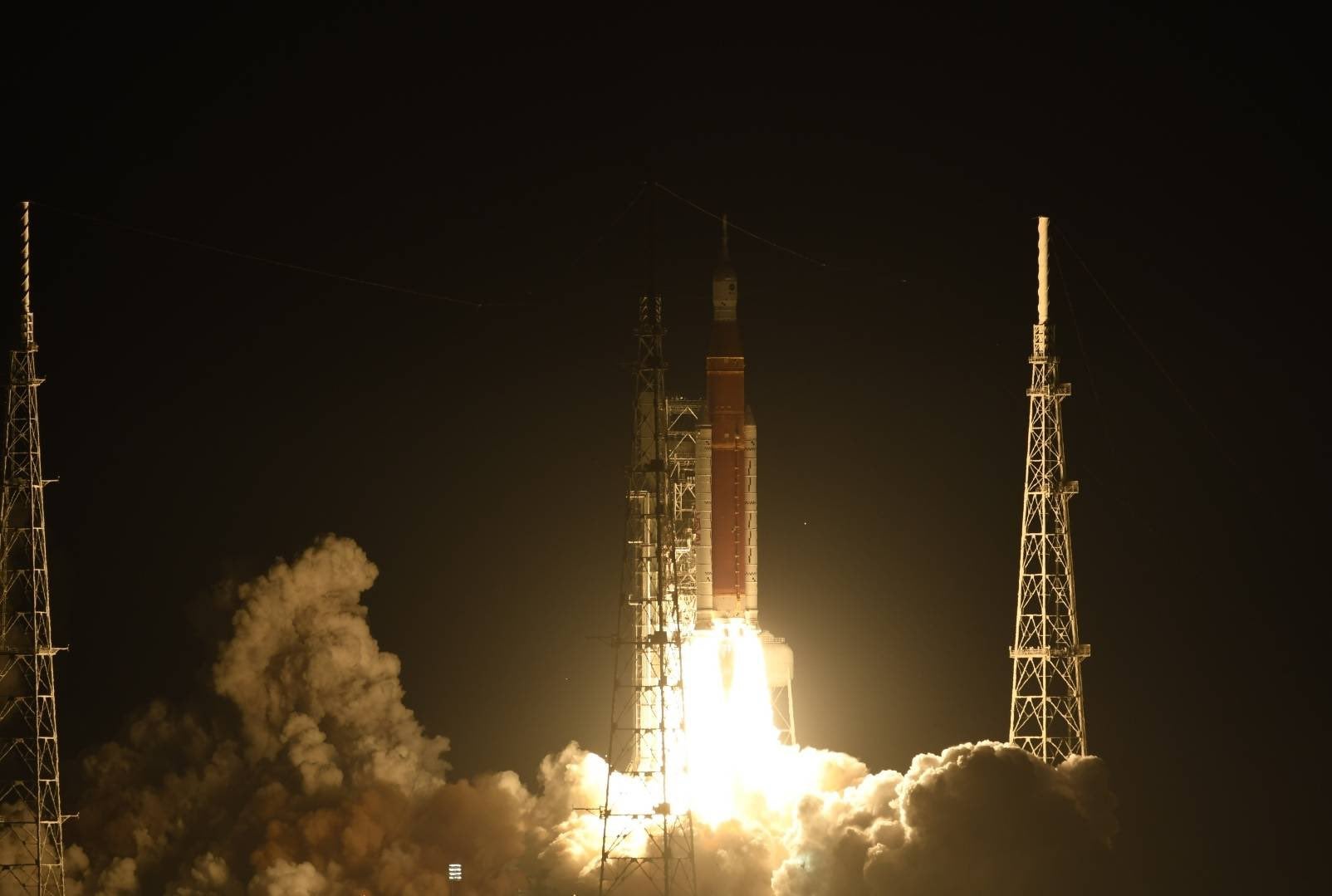NASA’s Artemis 1 mission is officially underway, with SLS lifting off from Kennedy Space Centre Wednesday afternoon and sending the Orion spacecraft on a 25-day journey to the Moon and back.
An idea conceived more than 12 years ago has finally taken flight. NASA’s 5.75-million-pound Space Launch System thundered away from Launch Pad 39B at Florida’s Kennedy Space Centre at 5:30 pm AEDT time, marking the start of the Artemis 1 mission and kicking off the Artemis lunar program, setting the stage for humans to land on the Moon this decade.
Liftoff!
For the first time, @NASA_SLS and @NASA_Orion are flying together toward the Moon for #Artemis I. pic.twitter.com/WP8eTSzHRk
— NASA Marshall (@NASA_Marshall) November 16, 2022
Together, the two side boosters and four RS-25 engines produced a whopping 8.8 million pounds of thrust at liftoff, officially making SLS the most powerful rocket in existence. The megarocket is capable of lifting more than 57,320 pounds (26 metric tons) of cargo and crew to the Moon, and future configurations will make it able to lift even more. The rocket, along with the Orion capsule, cost nearly $US50 ($69) billion to develop, but these components are key to NASA’s Artemis program, which seeks to establish a long-term presence at and around the Moon.

The megarocket launched 43 minutes into the two-hour launch window, which opened at 1:04 a.m. ET (5:00 p.m. AEDT). A hydrogen leak was detected during upper stage tanking, requiring a team of specialists to enter the launch pad and tighten bolts that had come loose. A problem with the Eastern Range’s radar, which is linked to the rocket’s abort system, caused a further delay, but the issue was resolved by swapping out a faulty Ethernet cable. Polling for launch began around 1:35 a.m. ET (5:35 p.m. AEDT), with the “go” for launch coming shortly thereafter. The countdown, which had been on hold, resumed at the T-10 minute mark, with SLS taking flight at 1:47 a.m. ET (5:47 p.m. AEDT).
SLS launched despite some minor damage caused by Hurricane Nicole, which swept through the region last week. High winds stripped 3.05 m of caulk-like sealant from a gap between Orion’s launch abort system and the crew module adaptor. Earlier this week, mission managers said more of the sealant, known as RTV (room temperature vulcanizer), might fall off during launch, but they deemed the consequences as being low risk.
More on this story: What you need to know about NASA’s Artemis 1 mission to the Moon
Today’s launch unfolded exactly as planned, with the side boosters and core stage falling away within the first 500 seconds of the mission, and Orion’s solar array deploying 20 minutes into the mission. It’ll take four days for the uncrewed spacecraft to reach the Moon, where it will spend 17 days spinning around our natural satellite. Following another four-day journey home, Orion’s heat shield will have to endure temperatures reaching 2,760 degrees Celsius, as the spacecraft slams into Earth’s atmosphere at speeds reaching 40,234 km per hour. For NASA, Artemis 1 is as much a test of SLS as it is of Orion.
The third time was the charm for NASA, as the space agency had tried to launch SLS on August 29 and September 3, only to be disappointed. The first scrub was the consequence of a faulty sensor, but the second scrub was due to an unmanageable hydrogen leak. SLS, like the Space Shuttle before it, uses supercooled liquid hydrogen for propellant, which is notorious for creeping out through the smallest cracks and openings. During propellant loading on Wednesday, ground teams used a “kinder, gentler” approach to tanking that eased the rocket into accepting the cryogenic fuel without sprouting problematic leaks.
It’s an exciting start to Artemis 1, which will end with Orion’s reentry and splashdown in the Pacific Ocean on Sunday, December 11. We’ll be tracking the intrepid spacecraft during each step of its historic first journey to the Moon. Should Artemis 1 go as planned, NASA can look ahead to the crewed Artemis 2 mission around the Moon, and then to Artemis 3, in which two astronauts will walk on the lunar surface for the first time since the Apollo program.
